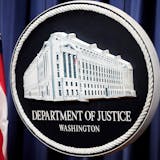Since Franklin Delano Roosevelt's New Deal, Americans have thought that for any new president, the first 100 days are critical, because he has a honeymoon period in which Congress will do what he wants. But in the modern era, the first 50 days are the defining ones. That's when the new executive branch is just taking shape, and the White House has maximal discretion to act entirely on its own — and to turn the government in its preferred directions.
The Trump administration seems primed to exercise that discretion. But in a few months, it is likely to slow down, and for identifiable reasons.
I was privileged to serve in the initial year of the Reagan and Obama administrations — the first as a young lawyer, the second in a more senior position. Nearly 30 years separated the two transitions, but the pattern was identical. In late January, new officials assume their positions with bold plans — new executive orders, new presidential memorandums, new processes, dramatic departures from the paths established by their immediate predecessors.
In the first weeks, the president's top advisers have essentially free rein. Much of the new government isn't even in place. If the White House can control its own Cabinet (a potentially challenging enterprise), it has nearly unlimited room to maneuver.
By the end of February 1981, Reagan issued no fewer than nine executive orders; by the end of February 2009, Obama issued 17. And those numbers give just a glimpse of how rapidly, and how dramatically, both presidents redirected the ship of state in their initial weeks.
But after a few months, two things happen.
First, the number of presidential appointees grows exponentially. The full Cabinet is usually in place, and its members assert themselves; the subcabinet starts to fill in as well. That means that whenever the White House wants to do something, it has to include, and listen to, many more people. It must go through an increasingly formalized clearance process, including people who speak for their "building." Internally, there is a sharp increase in the number of people who can veto or at least constrain what the White House does.
For an executive order, that's an excellent idea, because it reduces the risk of mistake, but it also slows things down. If a Cabinet head dislikes a paragraph or a sentence, or thinks the whole idea is stupid, an executive order might be stopped in its tracks, even if the president himself was initially inclined in its favor. Within the executive branch, an unwelcome word is "nonconcur" — and a nonconcurrence can be a serious obstacle.



